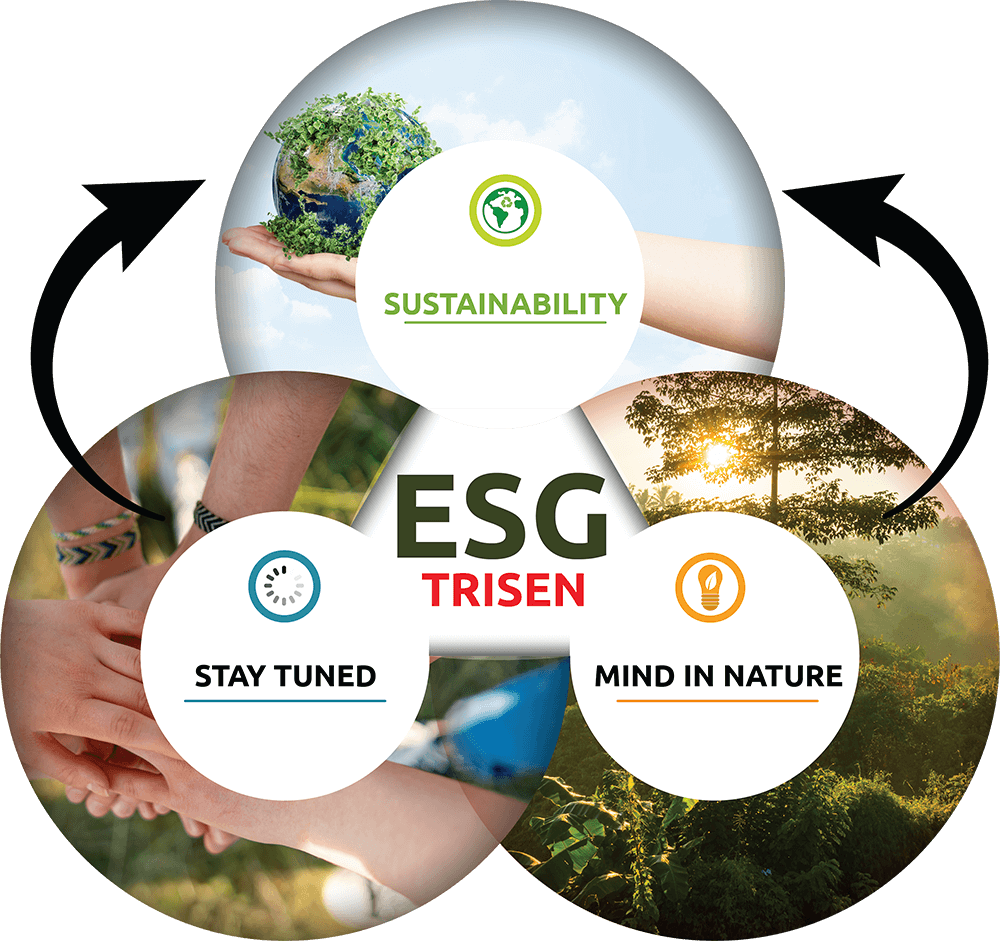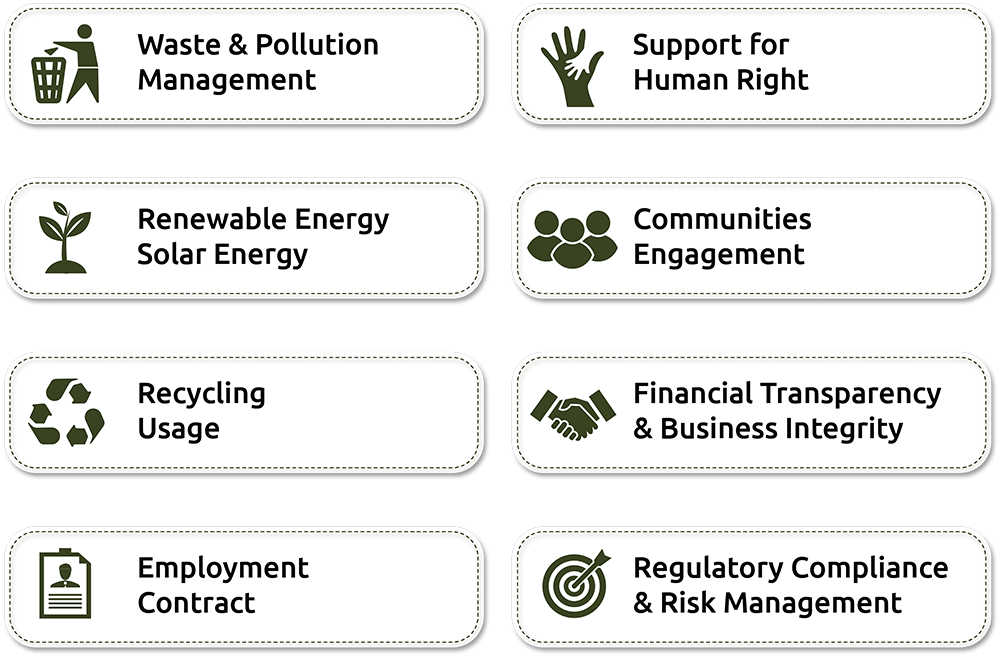A non financially impacted framework to assess and to ensure accountability the implementation of mechanism for an organization’s business practices and performance towards sustainability and ethical nature.
What Are The Scope & Monitoring Of Corporate Emission
1
Scope 1 - Direct Emission Source
Scope 1 emissions are “direct emissions” from sources that are owned by the company. This can include emissions from the following :
- Company owned vehicle from the combustion of fuel consumption.
- The usage of cooling water by static facilities such as cooling tower, MTC, chiller and spray paint booth.
- The emission from processing of materials and chemicals such as plastic resin, rubber compound, ink, paint and cleaning solvent.
- The discharge of emission gasfication effluent standard throgh chimney.
- Fugitive emissions, including methane emissions from coal mines.
- Production of electricity from burning coal and fuel.
- Waste water Treatment plant for neutralised toxic elements.
2
Scope 2 - Indirect Emission Source Within Organisation by purchased items
Scope 2 emissions are the “indirect emissions” released into the enviroment from the use of purchased that inclusive of tangible & intangible services for the company process activities where the direct emission originated is not within the organisation.
- The usage of supply electricity from energy company.
- The supply of treated water from water supply authorities.
- The usage of supply LPG gas.
- The service provider for waste colletion.
- The service provider for waste water treatment authorities.
3
Scope 3 - Indirect Emission Source Outside organisation
Scope 3 emissions encompasses all other “indirect emissions” in scope 2 that are exclusively indirect to make up the process activities. They are outside of the organisation’s direct control and a non purchased for the supply chain.
- Employees commuting to and from work. (inclusive of public transport).
- The air travel by aviation company & seaport authorities.
- The waste disposal.
- Transportation of supply for purchased items.
- Transportation of customer visit for business discussion.
- Transport and disposal of waste.
Formulation

3 PILLARS OF "ESG"
The ESG Benefits For Businesses
ESG programs help businesses attract investors
Build customer loyalty
Grow with new customers
Gain a competitive edge
Attract and retain good quality emplyees
Corporate and product branding
Social and communities recognition
Make operations sustainable
Improve financial performance
Transparency reporting system



